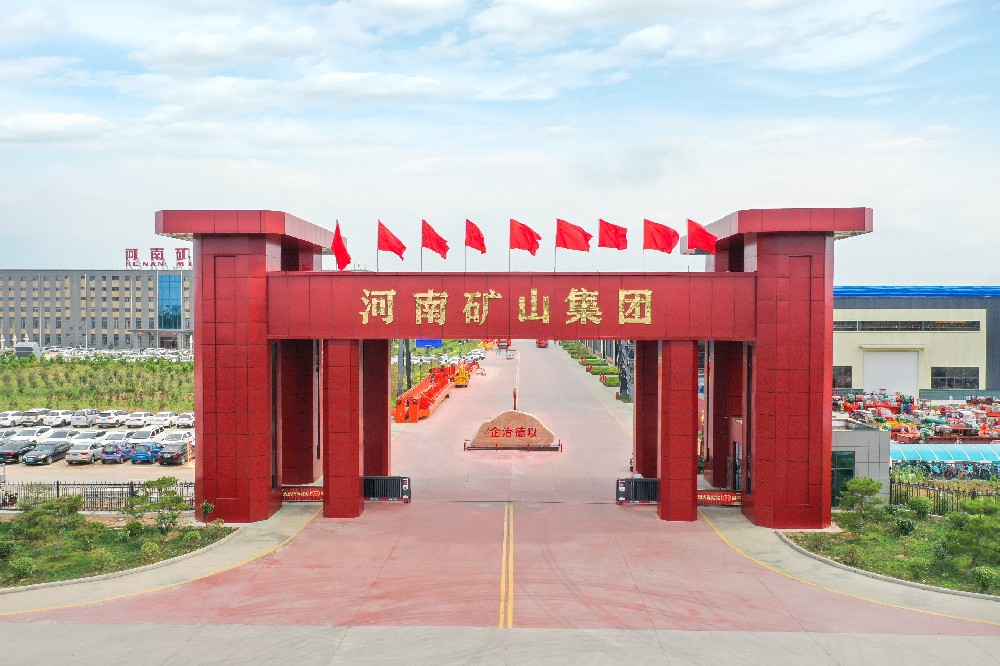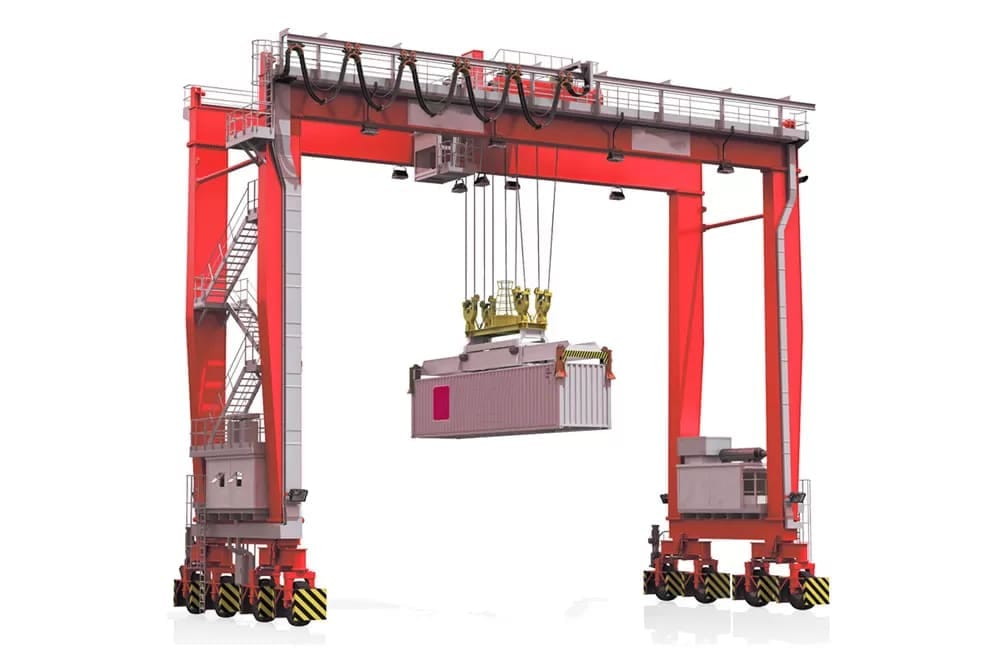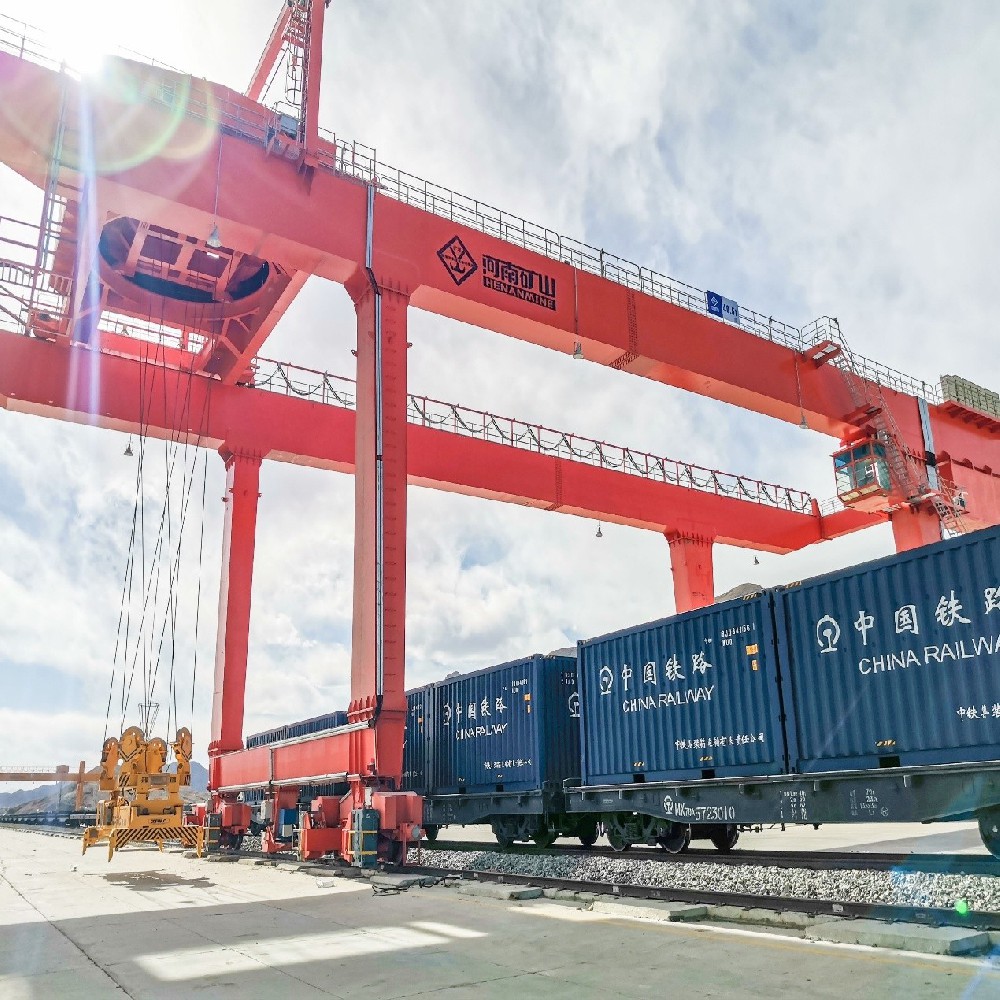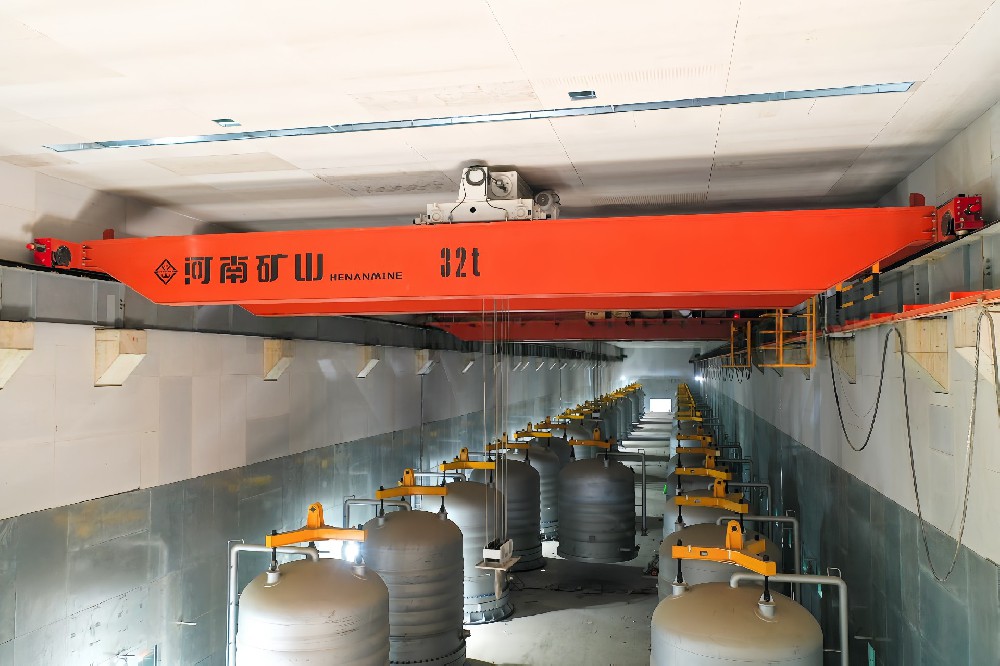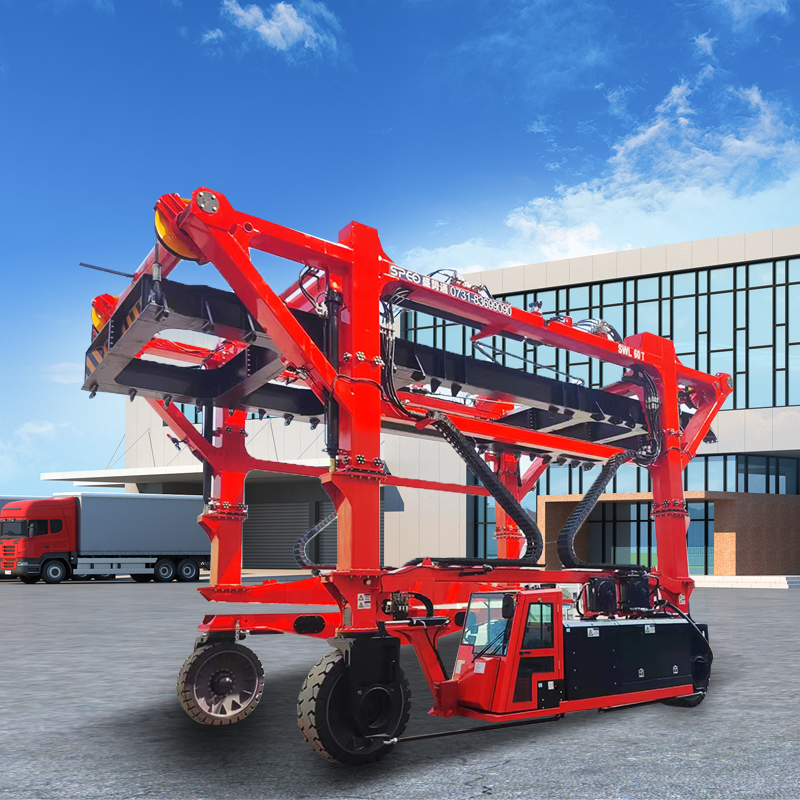- How Paper Mills Choose Specialised Cranes
-
Release Time:2025-10-16 15:06:04Share:
How Paper Mills Choose Specialised Cranes
Cranes are an essential part of the production process in the paper industry. Every stage, from handling logs and transporting pulp to moving finished paper rolls, relies on them. Paper mills are one of a kind, with their humidity, high paper dust levels and materials like paper rolls and pulp tanks that are often heavy and irregularly shaped. Standard cranes often can't meet these demands. So, choosing a crane that's specially designed for the job and can be trusted to be safe is really important to get more done while cutting risks. Here, we've outlined some of the main things to think about when choosing the right crane for your paper mill.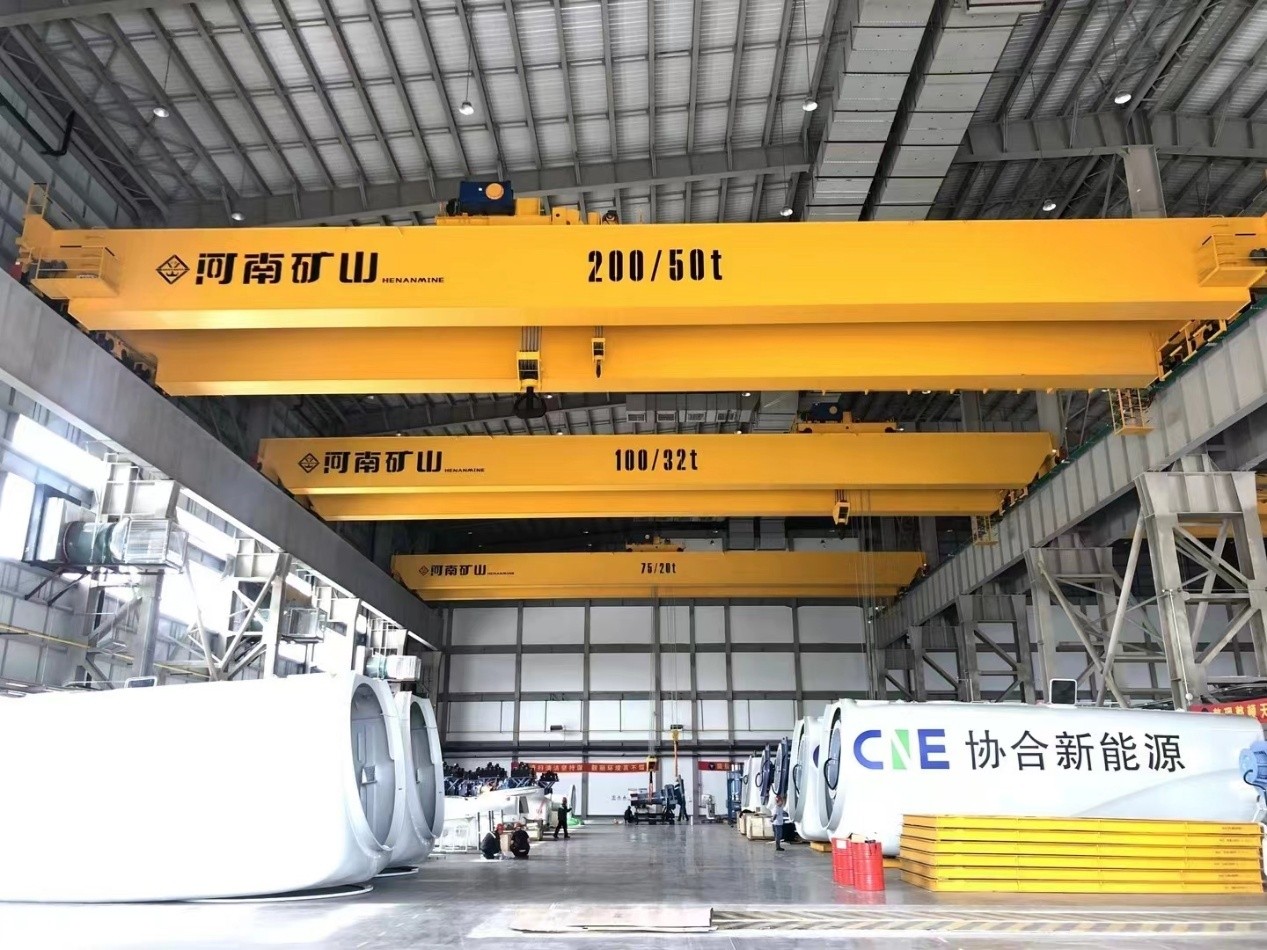
I. Figure out the different scenarios for how paper mills are made and work out what cranes need to be able to do.
Making paper is a long process with lots of different stages, and each one needs different crane skills. To choose the right equipment, you first need to understand the specific situations it'll be used in.
Raw Material Handling: Make sure you focus on durability and efficiency.
Loading and unloading raw materials like logs and waste paper usually happens outdoors or in warehouses. These environments are complex, often exposed to wind and rain, and may contain high levels of material impurities. When you're dealing with this kind of thing, it's best to go for gantry cranes or bridge cranes (ones with grab buckets). These devices can lift a lot (typically 10-50 tons) and can operate over a wide area. The grab bucket attachment makes it a breeze to handle bulk materials, boosting loading and unloading efficiency. On top of that, the equipment needs to be able to handle rust and dust, like using galvanized steel and sealed motors, so it can't be damaged by things like dirt or moisture.
Pulp and Semi-finished Product Handling: It's all about making things smooth and precise. Pulp is usually stored in big tanks or pulp boards, but semi-finished products (like wet paper sheets) can be delicate. If you're handling it roughly, it might leak or get damaged. For this process, European-style cranes or suspension cranes are recommended. They're lightweight, so they're easy to use, and you can adjust the speed to between 0.5 and 10 metres per minute, so you can position materials really precisely. We also need to install load cells and anti-sway devices: the load cells keep an eye on the weight of the material as it's being loaded to stop it from overloading, and the anti-sway devices stop the machine from swaying too much to protect the pulp and semi-finished products.
Finished Paper Roll Transfer: Protection and compatibility are the main things we're focusing on
The finished paper rolls have smooth surfaces and soft textures, and they usually weigh between 5-20 tons. It's really important that transfers stop surface scratches and compression deformation. To deal with this, it's best to use specialised paper roll cranes. Their clamps or suction cups have to be the right size for the roll, and the inner surfaces of the clamps should be lined with rubber or some other soft material to stop them scratching the surface. Suction cups need to be able to stick to stuff really well so that they can keep their grip when you're moving them around. At the same time, the crane's operating track needs to line up with the paper roll warehouse layout. It's best to use curved tracks or double-girder structures so you can handle paper rolls in all directions and cut down on extra handling.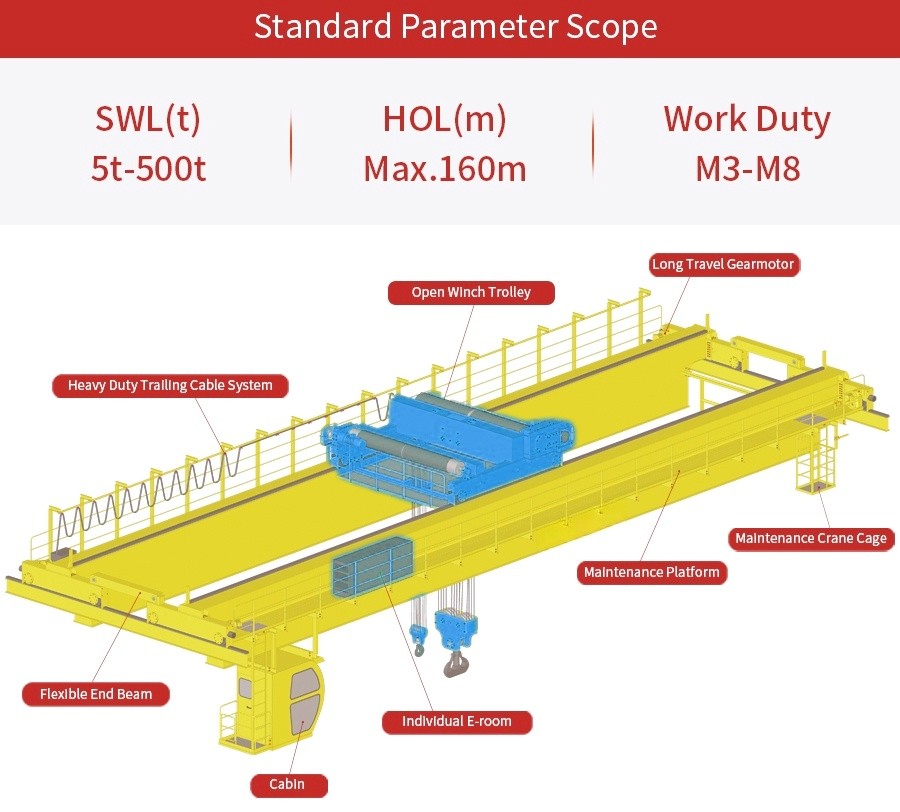
II. Keep an eye on the main technical stuff to make sure the equipment matches up with the production scale
Once you've got the application scenario sorted, tweak the crane's technical settings based on the paper mill's production scale and material types. This'll help stop the equipment from idling or causing production bottlenecks because of mismatched specs.
Lifting Capacity: Make sure the maximum weight of the material is matched with a safety margin.
The lifting capacity has to be worked out based on the heaviest material handled in the paper mill. For example, if the max weight of a single log during loading/unloading is 15 tons, pick a crane with a 20-ton lifting capacity, adding a 20%-30% safety margin to prevent unexpected overloads. Also, remember the difference between "rated lifting capacity" and "actual lifting capacity." Some cranes have a rated capacity that includes attachments like hooks or grabs. Just to be clear, the crane's load-bearing capacity is based on the weight of the crane itself, not including the weight of any attachments. Just make sure you get this sorted with the manufacturer when you're choosing your bike.
Span and Lifting Height: Make sure you get the layout of the plants right so you can meet the space requirements.
The distance between the crane rails has to be the same as the width of the facility. For example, in a 24-metre-wide paper mill workshop, you should choose a crane span of 22-23 metres, to allow clearance to prevent collisions with structural columns. Lifting height (maximum distance from hook to floor): Just work out the height based on how high the material stacking is and the ceiling height of the facility. For example, if the warehouse stacking height is 6 metres and the ceiling is 10 metres, pick a lifting height of 8-9 metres so the paper rolls can be lifted to the right height and stacked easily.
Work Class: Make sure you use the right frequency for the job to keep your equipment in good nick. The crane's work class (based on the task and the load) has a big impact on how long your kit will last. Paper mills are always running, with cranes in use for 8-12 hours a day and mostly with medium loads, so you need a Class A5-A6 crane. If you pick equipment with an insufficient duty cycle (like A3-A4), you risk motors, reducers and other components failing prematurely because they're operating at high frequency for a long time, which increases maintenance costs. On the other hand, choosing a duty cycle that's too high (like A7-A8) can mess up how well the equipment works and make the buying costs go up.
III. How to keep your equipment safe to reduce production risks
Paper mills are seen as important fire prevention units, and the places where they are run have lots of safety problems (e.g. flammable paper dust, slippery floors that cause equipment to slide). So, it's really important to make sure that cranes are safe, especially when it comes to the following things:
Here's what we've got on safety protection devices: Making sure you're covered
The most important safety devices are: Overload limiters stop the hoist if the load gets too heavy. Travel limiters stop the crane from moving too far to avoid collisions. Emergency stop buttons cut the power to the equipment quickly if there's a problem. On top of that, there are some special things you need to have in place to stop fires in paper mills. This includes things like fireproof screens on motor cooling fans and flame-retardant cables. You also need to make sure there are anti-slip devices, like side blocks on rails and high-friction materials for wheels. This is to reduce the risk of fires and equipment slippage.
Braking System: Keeps things running smoothly by stopping and starting without a hitch, and stops materials from swaying.
It's super important that the braking system is reliable for safety reasons. It's best to have a dual braking system (with separate controls for hoisting and travel) using hydraulic push-rod brakes or electromagnetic brakes. These braking methods have high braking torque and smooth start/stop performance, which effectively prevents violent material sway during operation. Also, have a look at the material the brake pads are made of and how long they'll last. Choose materials that can handle a lot of wear and tear (like asbestos-free brake pads) to make it longer before you need to replace them and to keep your car on the road more often.
Electrical System: We've adapted it for humid and dusty environments to make sure it's stable.
Paper mills have humid workshops with high levels of paper dust, which can cause electrical short circuits or failures. So, crane electrical components need to have strong protective features. For example, control cabinets should have an IP54 or higher protection rating (dust and water resistant), motors should use enclosed structures, and cable connectors should feature waterproof sealed designs. It's also a good idea to install an electrical fault alarm system. If any of the electrical components malfunction, it triggers audible and visual alarms straight away, which helps the maintenance team to quickly find the fault and keep the equipment running.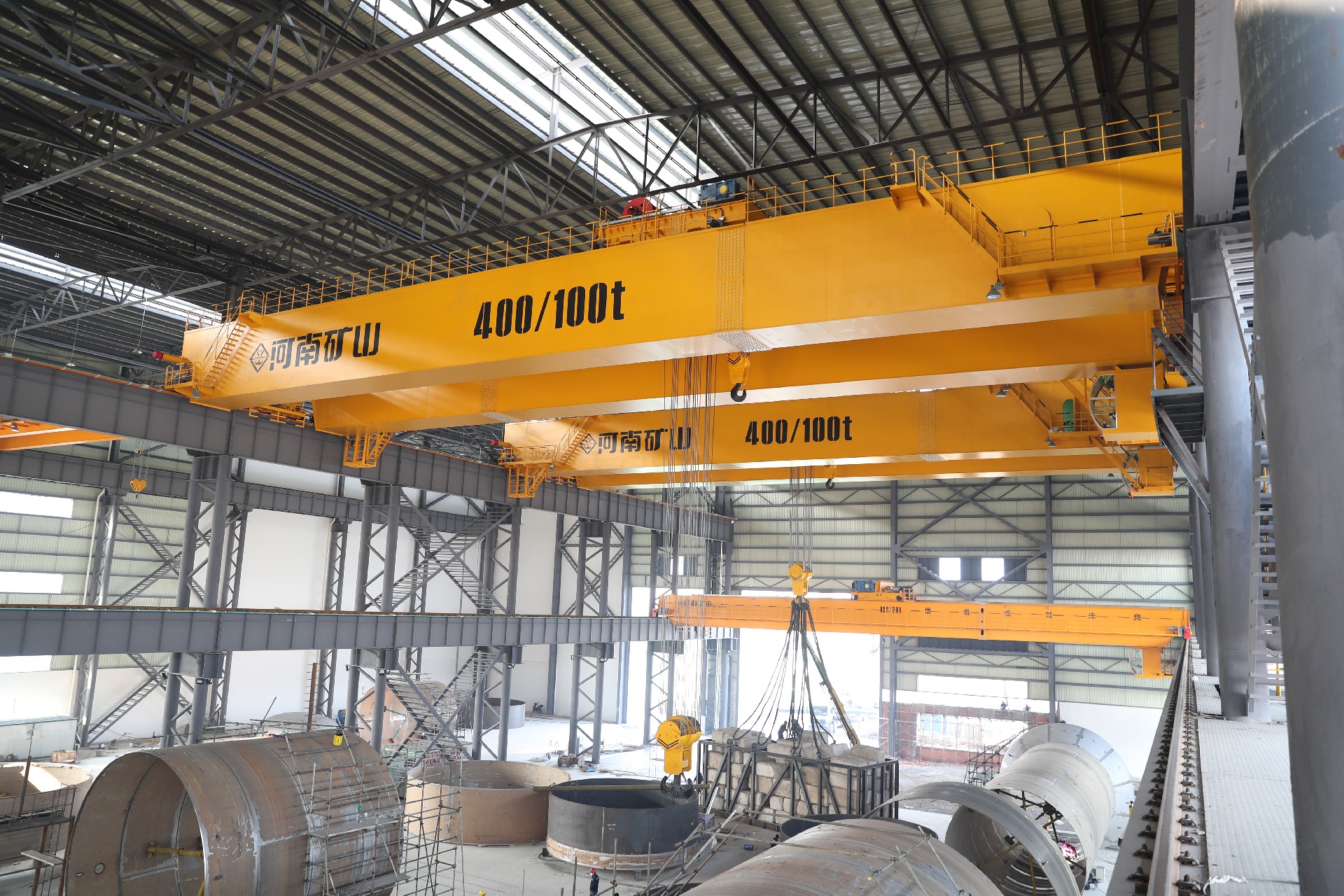
IV. Pick professional manufacturers and after-sales service to make sure your cranes keep going for years.
Cranes are big machines. The quality of their products and the after-sales service have a direct impact on the user experience. Paper mills have to look at how good manufacturers are and how much service they can provide when they're buying stuff.
Have a look at who's making the product and what they're doing, to make sure it's all done professionally.
Try and find the ones with both the Special Equipment Manufacturing License (Class A) and the Special Equipment Installation, Modification, and Maintenance License. These manufacturers stick to strict production standards, making sure their products are top-notch. Also, ask for case studies from the same industry, like whether they've supplied special cranes to big paper manufacturers (like Nine Dragons Paper, Chenming Paper), to see how well the equipment works in real-world situations and avoid manufacturers who don't have experience in the industry.
It's important to emphasise customisation capabilities to meet unique requirements.
Production processes and material characteristics vary across paper mills, so standardised cranes might not be enough. So, a manufacturer's ability to customise is really important. For example, if a mill needs handling pulp tanks that are different sizes, the manufacturer has to design special lifting gear to fit the tank. If the factory layout is a bit unusual, the manufacturer should offer custom track solutions and installation plans to make sure everything fits in with the production environment.
Keep an eye on after-sales service to cut long-term operating costs.
After-sales service includes things like setting up and getting equipment up and running, training operators, regular maintenance, and fixing any problems. When picking a manufacturer, make sure you're clear on what you want in terms of service. Also, ask the people who make the machines to provide maintenance plans, like quarterly inspections and annual checks, to make sure everything keeps going for as long as possible and to keep things from breaking down.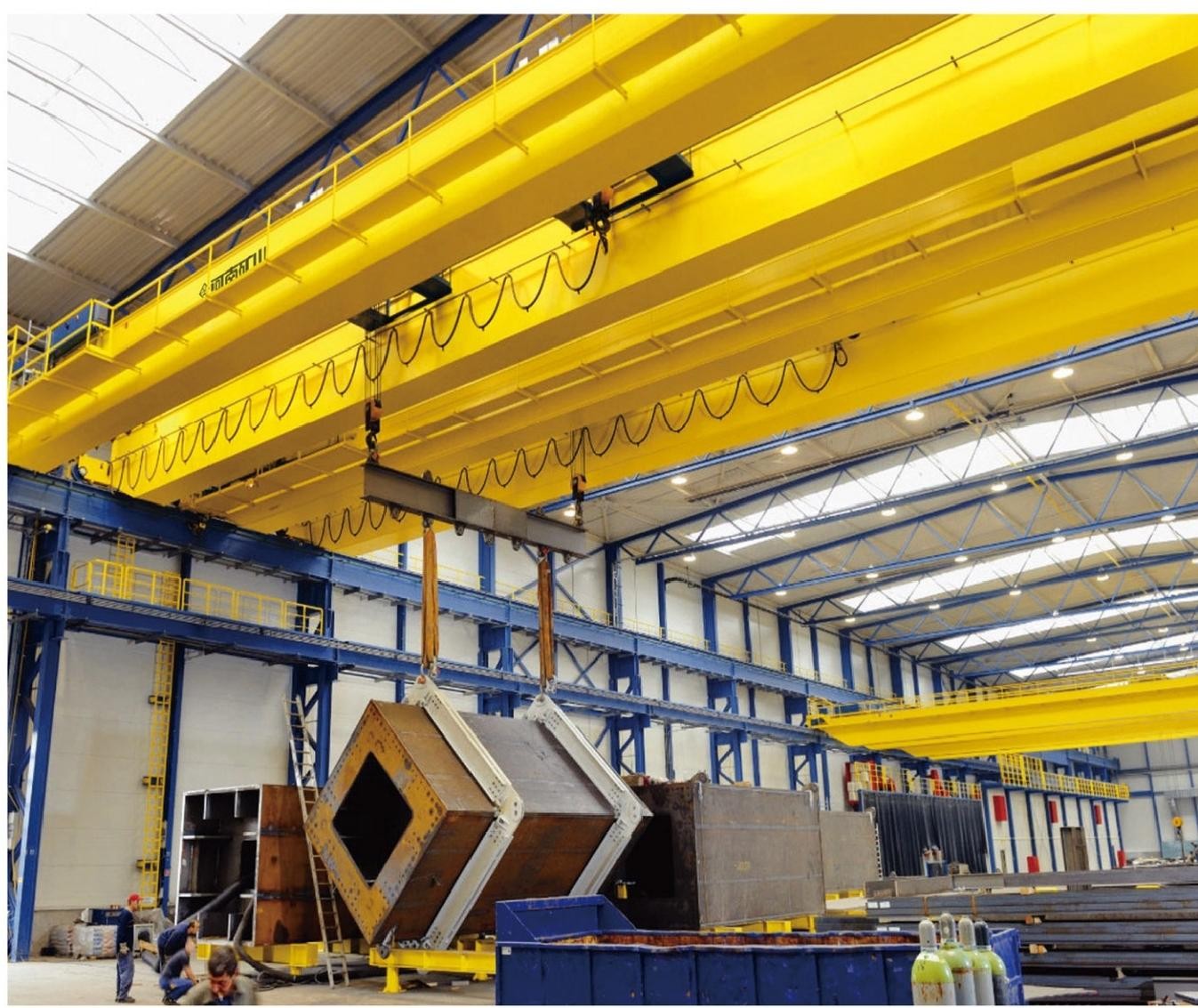
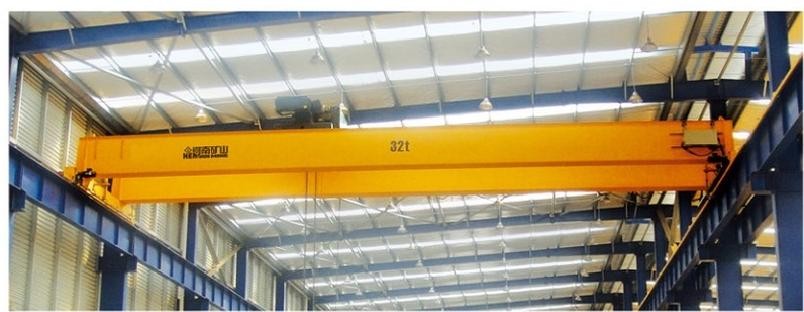
So, when it comes to picking cranes that are just right for paper mills, it's really important to look at all the different aspects that matter. We're talking about the environment where they'll be used, the technical details, how safe they are, and what the manufacturer can do. This makes sure that the equipment meets the production requirements, while keeping safety and efficiency in mind. Henan Mine Crane is a well-known domestic crane manufacturer with over 20 years of experience in the industry. They offer custom solutions for the papermaking industry. Our special cranes cover the whole process, from handling raw materials and transporting pulp to moving finished products around, and we've got you covered with our after-sales service system. We're like the go-to guys for papermills, offering everything from picking the right equipment to keeping things running smoothly after installation. If you're looking for specialised cranes for your paper mill, then get in touch with Henan Mine Crane. We'll give you professional selection recommendations and customised solutions based on your specific requirements, helping to boost your production efficiency and make sure your operations are safe.
